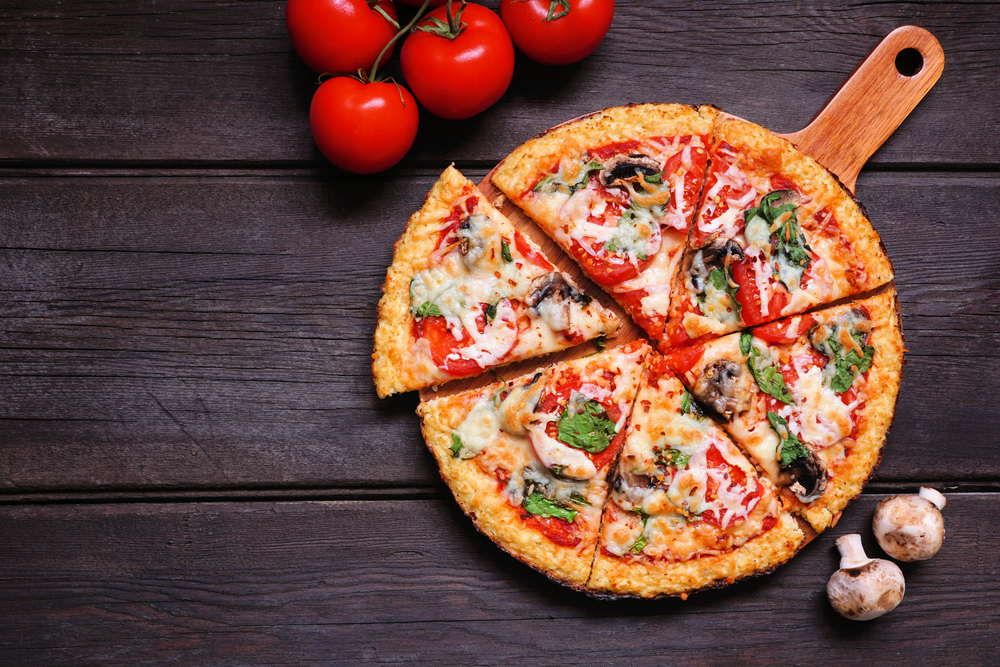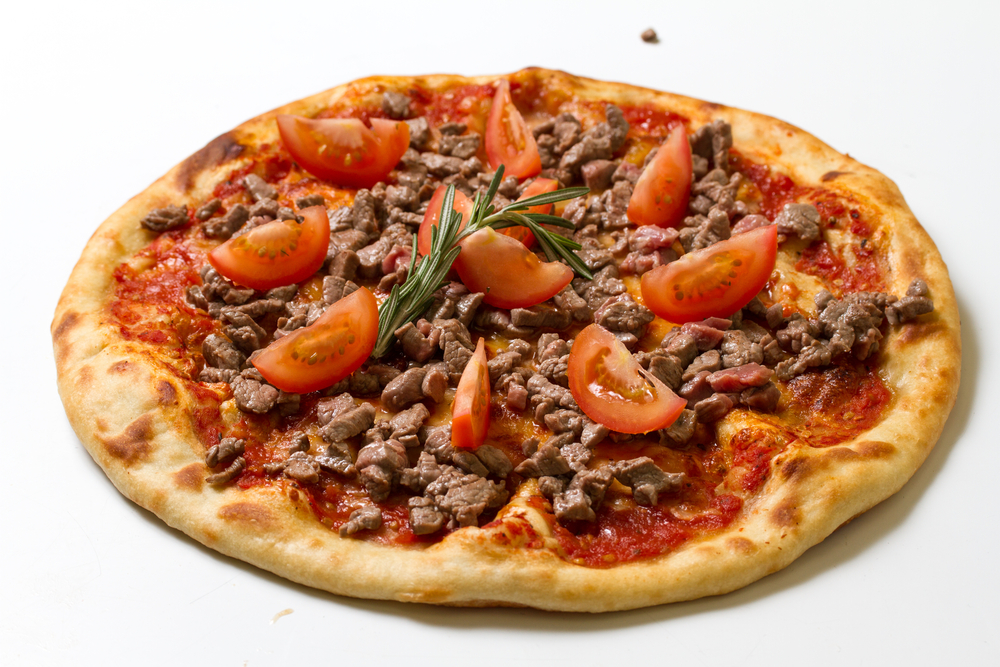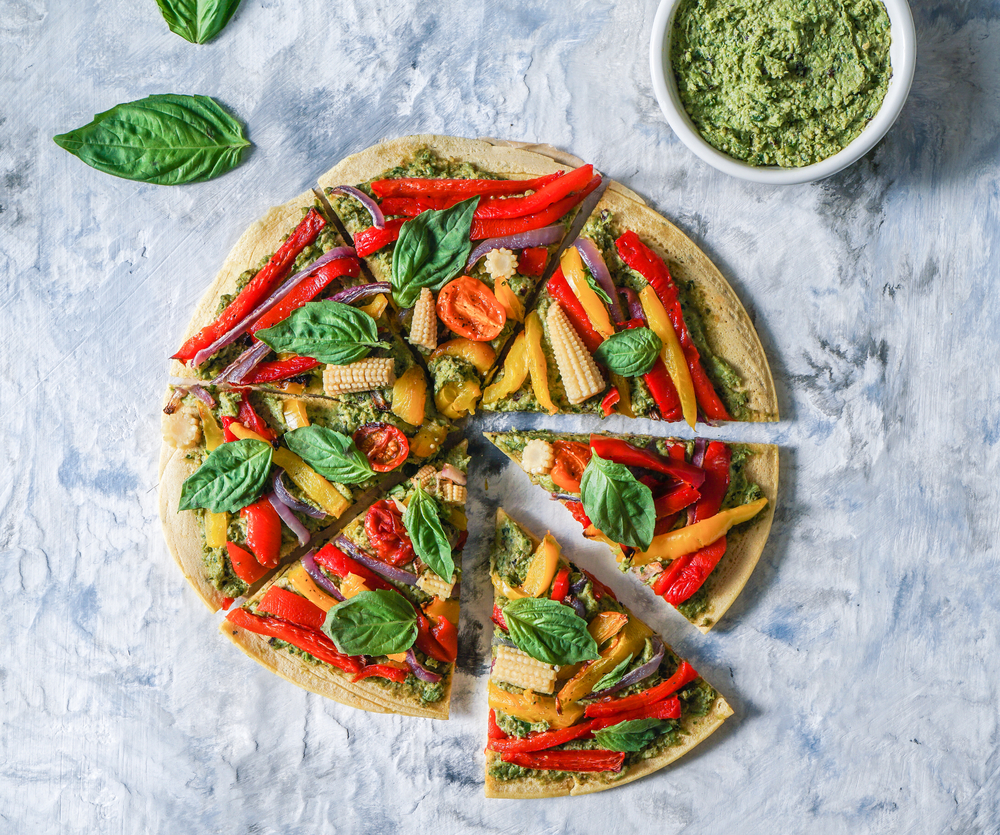Pizza is frequently disallowed when it comes to adopting a ketogenic diet. However, many people are unsure if gluten-free pizza is keto-friendly due to the increase in gluten-free alternatives.

The components used in the crust and toppings determine whether the answer is a straightforward yes or no.
If it is created with low-carb components like almond flour or cauliflower, gluten-free pizza can be keto-friendly. These wheat flour substitutes can aid in reducing the amount of carbohydrates, making it a good choice for individuals on a ketogenic diet.
It is crucial to remember that not all gluten-free crusts are created equal and some may still have a lot of carbohydrates in them.
Asking about the toppings and dough components is crucial when ordering gluten-free pizza at a restaurant. There may be keto-friendly crust alternatives available at some pizzerias but not at others.
Another choice is to make your own pizza at home with keto-friendly toppings. You can make sure your pizza is both keto- and gluten-friendly by doing this.
What is a Keto Diet?
A keto diet, also known as a ketogenic diet, is a low-carb, high-fat diet that has gained popularity in recent years. The goal of a keto diet is to put your body into a state of ketosis, where it burns fat for fuel instead of carbohydrates.

On a keto diet, you will consume a diet that is high in healthy fats, moderate in protein, and low in carbohydrates.
The exact macronutrient breakdown varies depending on the individual and their goals, but a typical keto diet consists of 70-80% fat, 10-20% protein, and 5-10% carbohydrates.
Carbohydrates are limited on a keto diet, with most people aiming for 20-50 grams of net carbs per day. Net carbs are calculated by subtracting the fiber content from the total carbohydrates listed on the nutrition label.
This is because fiber does not have a significant impact on blood sugar levels and does not need to be counted towards your daily carbohydrate intake.
By limiting carbohydrates and increasing fat intake, your body enters a state of ketosis. In this state, your liver produces ketones from stored fat to be used as energy instead of glucose from carbohydrates.
This can lead to weight loss, improved blood sugar control, and increased energy levels.
It is important to note that a keto diet is not for everyone and should be approached with caution. It is important to speak with a healthcare professional before starting a keto diet, especially if you have any underlying health conditions.
Additionally, it is important to ensure that you are getting all of the necessary nutrients and vitamins on a keto diet, as it can be easy to miss out on important nutrients if you are not careful.
What is Gluten-Free Pizza?
Gluten-free pizza is a type of pizza that is made without wheat, rye, barley, or any other grains that contain gluten.
Gluten is a protein found in these grains that can cause digestive problems for some people, particularly those with celiac disease or non-celiac gluten sensitivity.

Gluten-free pizza crusts are typically made with alternative flours such as rice flour, tapioca starch, potato starch, flaxseed meal, lupin flour, chia flour, or tapioca flour.
These flours are lower in gluten or gluten-free, making them suitable for those who need to avoid gluten.
It is important to note that not all gluten-free pizza crusts are keto-friendly. While some alternative flours are low in carbs, others may be high in carbs and not suitable for a keto diet.
For example, pizza crust made with rice flour or tapioca starch may not be keto-friendly because they are high in carbs.
When choosing a gluten-free pizza crust, it is important to check the ingredients and nutritional information to ensure that it is suitable for your dietary needs.
Many restaurants and pizza chains now offer gluten-free and keto-friendly pizza options, so it is easier than ever to enjoy pizza while sticking to your dietary restrictions.
In summary, gluten-free pizza is a type of pizza made without gluten-containing grains. It is typically made with alternative flour and may or may not be keto-friendly depending on the type of flour used.
When choosing a gluten-free pizza crust, it is important to check the ingredients and nutritional information to ensure that it fits your dietary needs.
Is Gluten-Free Pizza Keto-Friendly?
When it comes to pizza, it can be challenging to find a balance between taste, health, and dietary restrictions. For those on a keto diet, finding a pizza that is both gluten-free and keto-friendly can be especially tricky.

In this section, we will explore the ingredients to look for and avoid, keto-friendly gluten-free pizza recipes, and tips for eating gluten-free pizza at restaurants.
Ingredients to Look For
When it comes to making a keto-friendly gluten-free pizza, there are several ingredients to look for. These include:
- Cauliflower: This vegetable is a popular choice for making keto-friendly pizza crusts. It is low in carbs and high in fiber, making it an ideal ingredient for those on a keto diet.
- Almond flour and coconut flour: These flours are gluten-free and low in carbs, making them great substitutes for wheat flour in pizza crusts.
- Cheese: Cheese is a great source of healthy fats and protein, making it a perfect ingredient for a keto-friendly pizza. Mozzarella and parmesan cheese are popular choices.
- Pizza sauce or tomato sauce: These sauces are usually low in carbs and can be a great source of lycopene, an antioxidant that has been linked to several health benefits.
- Toppings: Meats like chicken and vegetables like broccoli, spinach, and mushrooms are great choices for a keto-friendly pizza. Olive oil and mayonnaise can also be used as a source of healthy fats.
Ingredients to Avoid
While there are many ingredients that are keto-friendly and gluten-free, there are also several ingredients to avoid. These include:
- Wheat flour: This flour is not gluten-free and is high in carbs, making it unsuitable for those on a keto diet.
- Starches: Starches like rye, barley, potato starch, and tapioca starch are high in carbs and should be avoided.
- High-carb Toppings: Toppings like pineapple and other high-sugar fruits should be avoided on a keto-friendly pizza.
Keto-Friendly Gluten-Free Pizza Recipes
Here are a few keto-friendly gluten-free pizza recipes to try:
- Cauliflower pizza crust: This thin crust is made with cauliflower, almond flour, and cheese and is a great keto-friendly and gluten-free option.
- Hawaiian pizza: Top a cauliflower crust with tomato sauce, ham, bacon, pineapple, and cheese for a delicious and keto-friendly pizza.
- Parmesan cheese crust: This crust is made with parmesan cheese and almond flour and is a great low-carb option.
Eating Gluten-Free Pizza at Restaurants
When eating out at a restaurant, it can be challenging to find a keto-friendly gluten-free pizza. However, there are a few tips to keep in mind:
- Look for thin crust options: Thin crusts are usually lower in carbs than thicker crusts.
- Choose keto-friendly toppings: Opt for toppings like vegetables, meats, and cheese.
- Ask for a gluten-free crust: Many restaurants now offer gluten-free crust options that can be made keto-friendly with the right toppings and sauces.
It is possible to enjoy a delicious and keto-friendly gluten-free pizza with the right ingredients and toppings. By choosing low-carb options and avoiding high-carb ingredients, you can indulge in a guilt-free pizza that is both healthy and satisfying.







Add comment